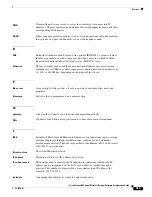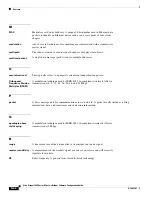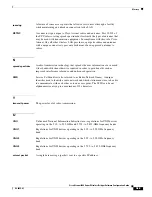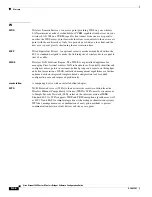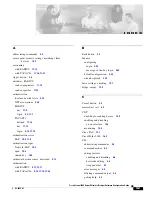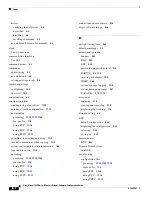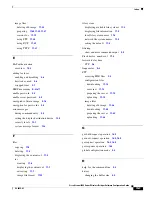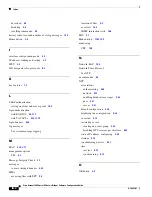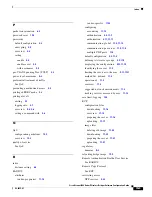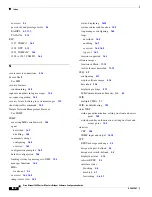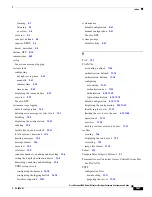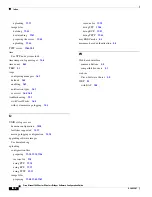
GL-1
Cisco Aironet 1400 Series Wireless Bridges Software Configuration Guide
OL-4059-01
G L O S S A R Y
802.11
The IEEE standard that specifies carrier sense media access control and physical
layer specifications for 1- and 2-megabit-per-second (Mbps) wireless LANs
operating in the 2.4-GHz band.
802.11a
The IEEE standard that specifies carrier sense media access control and physical
layer specifications for wireless LANs operating in the 5-GHz frequency band.
802.11b
The IEEE standard that specifies carrier sense media access control and physical
layer specifications for 5.5- and 11-Mbps wireless LANs operating in the
2.4-GHz frequency band.
A
access point
A wireless LAN data transceiver that uses radio waves to connect a wired
network with wireless stations.
ad hoc network
A wireless network composed of stations without access points.
antenna gain
The gain of an antenna is a measure of the antenna’s ability to direct or focus
radio energy over a region of space. High-gain antennas have a more focused
radiation pattern in a specific direction.
associated
A station is configured properly to enable it to wirelessly communicate with an
access point.
B
beacon
A wireless LAN packet that signals the availability and presence of the wireless
device.
BID
Bridge identifier used in spanning-tree calculations. The BID contains the bridge
MAC address and its spanning-tree priority value. If all bridges in the spanning
tree are assigned the same priority, the bridge with the lowest MAC address
becomes the spanning-tree root.
BOOTP
Boot Protocol. A protocol used for the static assignment of IP addresses to
devices on the network.
BPDU
Bridge protocol data unit. When STP is enabled, bridges send and receive
spanning-tree frames, called BPDUs, at regular intervals and use the frames to
maintain a loop-free network.

















